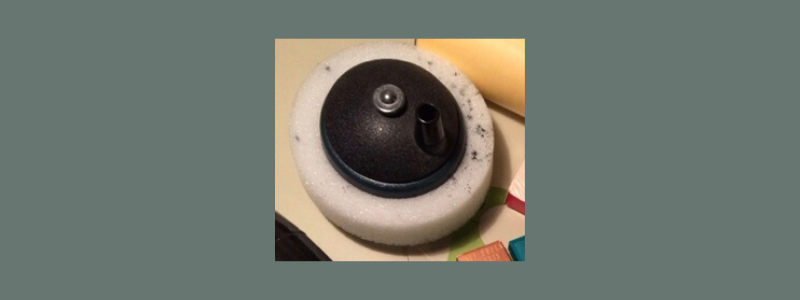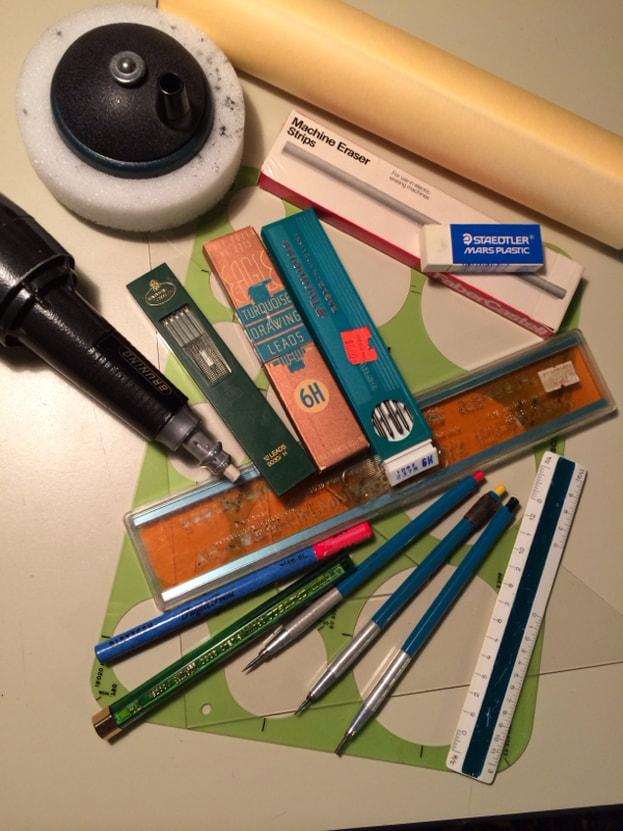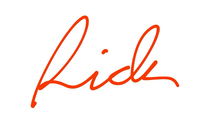|
"What kind of junk do you have in those boxes, grandpa?" My grandson likes to explore. Anything will do - sea shore (his favorite), woods near or far, or ... basements. "What kind of junk do you have in those boxes, grandpa?" The basement has a poor record of revealing treasure, although the walkie talkies that we got working last week were a hit for almost an hour. The boxes in question contain old drafting supplies - souvenirs would be a better term because the chances of using them again are almost zero. The watershed year for your reaction to these souvenirs is about 1965. If you were born before then, they stir up nostalgia or whatever is the negative version of nostalgia. If you were born after 1965, then we are talking curiosity about historical artifacts. These souvenirs, or artifacts, were manufactured by companies like Dietzgen, Bruning, Castell (later Faber-Castell), Koh-I-Noor, Staedtler, Turquoise. Some companies went the way of buggy whip makers or merged. Others still make art and drafting supplies.
For those who need help (born after 1965) with identification, moving clockwise from upper left, we have:
Missing are the Rapidograph India Ink pens and pen points, couldn’t find them, but they have to be around. They were too expensive to let go of. I think points, which you needed at least four of for different line weights, cost about $40 each in the late 80s / early 90s. Nowadays that is a week’s coffee allowance. A full set of pens with special humidifier still costs about $150. (See link below if you want to time travel.) You needed this stuff handy so some were permanent residents of your drafting surface, others resided on hooks screwed into the table edges and the rest were in your tackle box on the floor. The well-equipped drafter also had an erasing shield, lettering guide, a couple of French curves, parallel edge, Spiroll, Luxo Lamp, Leroy lettering equipment, pin bar for systems drafting, drafting tape (or dots), Prismacolor colored pencils, and a handful, or more, of markers. You could master all the tools you needed to use in a couple of weeks. Technique improved every year. It’s a little different now; and sadly the new tools take much more time to master and to stay current. “Sadly” because the tools never have made the architecture. Just sayin. * there were different types for the various combinations of writing media (graphite, plastic lead, ink) and drawing media (linen, vellum, Mylar, bond paper) ** this is the ’big’ circle template; also needed were small circle, symbols, and plumbing templates *** usually a small, medium and large size were needed for 45 and 30/60 degree triangles **** leads came in various hardness/softness to suite the drafting - 7H to H, F, HB, B to 6B; a lot got done with H, 2H, and F (4H and harder are basically nails, 4B and softer are sticks of black butter) See http://www.dickblick.com for many items mentioned here. Comments are closed.
|
x
Archives
February 2024
Categories
All
|
Architekwiki | Architect's Resource | Greater Cincinnati
© 2012-2022 Architekwiki
© 2012-2022 Architekwiki









